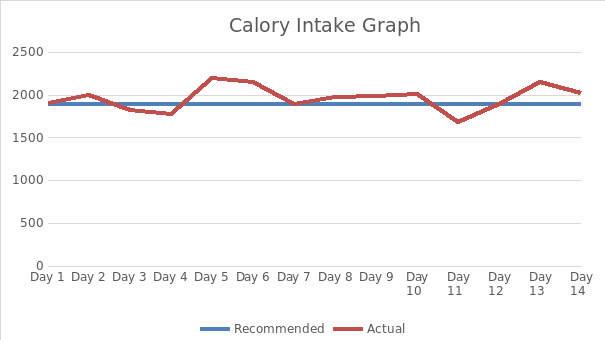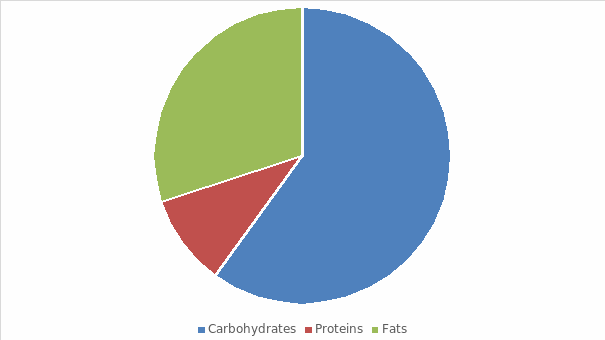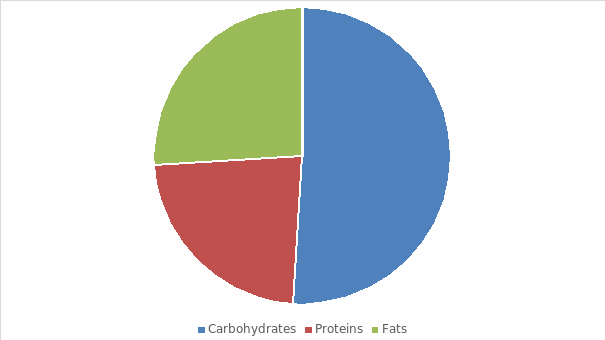Nutrition is the basis of life, and it should be important for any human being. Food sustains people; it gives energy and the fuel for internal processes of the human body. However, it can be different in terms of specific nutrients it provides. Each macroelement has its own purpose, such as being the source of energy or serving as a building material for cells. At the same time, nutrients should remain in balance so that a person has exactly the required quantity of each one. In addition, the total number of calories consumed determines an individual’s weight dynamic, meaning that it should correspond to their goal in this regard. There exists a great number of suggestions from expert dieticians, which provide the general picture of the recommended daily intake for a regular person. In most cases, the idea of healthy dietary plans is to ensure the daily intake, which would ensure a sufficient and balanced daily intake of nutrients.
The concept of balanced nutrition has been popular in today’s society. An ideal eating plan should include the right percentage of nutrients, which positively affect a person’s health and body functions. Patimah and Husma write that teenage years are particularly important in terms of healthy eating, as, for example, this period accounts for nearly 40% of peak bone mass (142). Mustafa and Maulidana add that imbalanced nutrition can cause an iron deficit in a person’s body, which leads to negative consequences in the organs (24). This condition is called anemia, and its incidence rate among residents of developed and emerging countries is quite alarming. In order to address the problem, Destriatania et al. suggest that public education of nutritional guidelines should become more active (123). Yurni and Sinaga agree with this idea and add that beginning to analyze one’s nutrient intake earlier in life are proved to have lasting positive results (200). Overall, knowing the difference between regular and healthy food, as well as the recommended daily intake of its key elements, will help people prevent serious issues.
The idea of healthy nutrition considers two main components, which a person must consider. The first one is related to the daily calory intake and reflects the total amount of consumed nutrients. This number is directly connected to a person’s weight, and it is determined by the individual variables (mass, activity level, age, height). In general, if the daily intake is higher than the recommended amount, the body mass will increase and vice versa. Table 1 shows the author’s recommended calory intake based on specific goals. Figure 1 compares it to the actual consumption observed within two weeks based on the goal to maintain current body mass.
Table 1. The Recommended Calory Intake

However, not all calories are the same because a more detailed diet analysis considers key elements like proteins, carbohydrates, and fats. Figures 2 and 3 compare the recommended protein/carbohydrate/fat with the actual distribution of elements in the author’s daily menu. In the case of these calculations, the primary variable consists of the type of food eaten by an individual. The core of the author’s menu includes a large amount of meat and seafood, which account for the considerable percentage of proteins. The supply of carbohydrates comes from grain products, namely noodles, and fruit. As it can be seen, the percentage of proteins is higher than recommended, while fats and carbohydrates are slightly below the norm.


Overall, balanced nutrition is the key to a healthier life with fewer issues. However, maintaining it is not an easy task. The intake of calories determines the possible dynamics of a person’s body mass, and this parameter is always individual. In addition, the consumption of calories is not the only indicator of a healthy diet. The proportions of macronutrients can be calculated based on the specific products in a person’s menu, and this parameter is even more important. Ultimately, the exact distribution of elements and calories will be individual for each person, which is why it is recommended to consult an expert dietician for better results. However, following the basic guidelines will already be an important step toward a better, healthier society.
Works Cited
Destriatania, Suci, Etrawati, Fenny, and Februhartanty, Judhiastuty. “Early development process of drama and storytelling scripts as media for nutrition education on balanced diets among elementary school children.” Malaysian Journal of Nutrition, vol. 25, 2019, pp. 123 – 137.
Mustafa, Annasari and Maulidana, Annisa Rizky. “The Effectiveness of Nutrition Education about Local Specific Food-based Balanced Nutrition Recommendation on Dietary Intake Level and Anemia Status in Female Adolescents at the Hidayatullah Arrohmah Islamic Boarding School Malang.” KnE Life Sciences, vol. 4, no. 15, 2019, pp. 23 – 31.
Patimah, Sitty and Husma, Amrah. “The Association of Balanced Nutrition Practices with Stunting Among Adolescent Girls in School.” International Journal of Food Engineering, vol. 5, no. 2, 2019, pp. 141 – 145.
Yurni, Adelwais Febriati, and Sinaga, Tiurma. “The Effect of Nutrition Education on School-Aged Children’s Consumption Pattern, Knowledge and Practice in Bringing Well-Balanced Menu for Lunch.” Journal of Nutritional Science and Vitaminology, vol. 66, 2020, pp. 196 – 201.